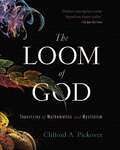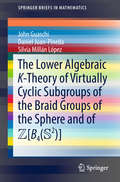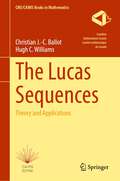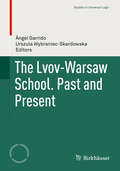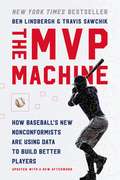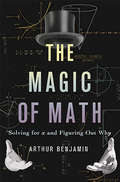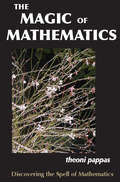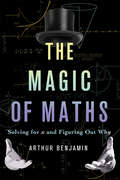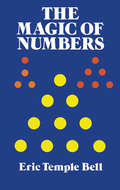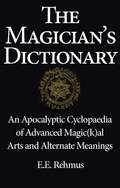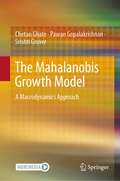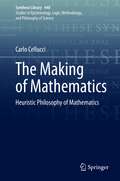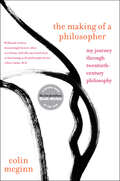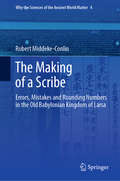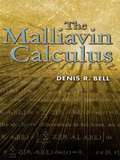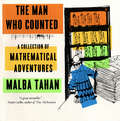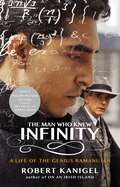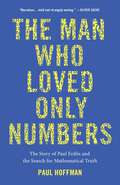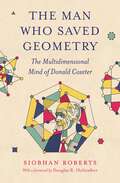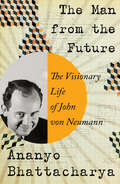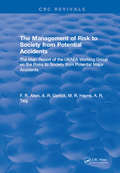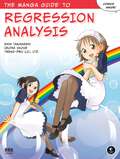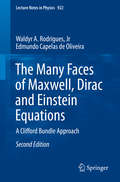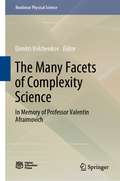- Table View
- List View
The Loom of God: Tapestries of Mathematics and Mysticism
by Clifford A. PickoverFrom the mysterious cult of Pythagoras to the awesome mechanics of Stonehenge to the “gargoyles” and fractals on today’s computers, mathematics has always been a powerful, even divine force in the world. In a lively, intelligent synthesis of math, mysticism, and science fiction, Clifford Pickover explains the eternal magic of numbers. Taking a uniquely humorous approach, he appoints readers “Chief Historian” of an intergalactic museum and sends them, along with a quirky cast of characters, hurtling through the ages to explore how individuals used numbers for such purposes as predicting the end of the world, finding love, and winning wars.
The Lower Algebraic K-Theory of Virtually Cyclic Subgroups of the Braid Groups of the Sphere and of ZB4(S2)
by John Guaschi Daniel Juan-Pineda Silvia Millán LópezThis volume deals with the K-theoretical aspects of the group rings of braid groups of the 2-sphere. The lower algebraic K-theory of the finite subgroups of these groups up to eleven strings is computed using a wide variety of tools. Many of the techniques extend to the general case, and the results reveal new K-theoretical phenomena with respect to the previous study of other families of groups. The second part of the manuscript focusses on the case of the 4-string braid group of the 2-sphere, which is shown to be hyperbolic in the sense of Gromov. This permits the computation of the infinite maximal virtually cyclic subgroups of this group and their conjugacy classes, and applying the fact that this group satisfies the Fibred Isomorphism Conjecture of Farrell and Jones, leads to an explicit calculation of its lower K-theory. Researchers and graduate students working in K-theory and surface braid groups will constitute the primary audience of the manuscript, particularly those interested in the Fibred Isomorphism Conjecture, and the computation of Nil groups and the lower algebraic K-groups of group rings. The manuscript will also provide a useful resource to researchers who wish to learn the techniques needed to calculate lower algebraic K-groups, and the bibliography brings together a large number of references in this respect.
The Lucas Sequences: Theory and Applications (CMS/CAIMS Books in Mathematics #8)
by Hugh C. Williams Christian J.-C. BallotAlthough the Lucas sequences were known to earlier investigators such as Lagrange, Legendre and Genocchi, it is because of the enormous number and variety of results involving them, revealed by Édouard Lucas between 1876 and 1880, that they are now named after him. Since Lucas’ early work, much more has been discovered concerning these remarkable mathematical objects, and the objective of this book is to provide a much more thorough discussion of them than is available in existing monographs. In order to do this a large variety of results, currently scattered throughout the literature, are brought together. Various sections are devoted to the intrinsic arithmetic properties of these sequences, primality testing, the Lucasnomials, some associated density problems and Lucas’ problem of finding a suitable generalization of them. Furthermore, their application, not only to primality testing, but also to integer factoring, efficient solution of quadratic and cubic congruences, cryptography and Diophantine equations are briefly discussed. Also, many historical remarks are sprinkled throughout the book, and a biography of Lucas is included as an appendix.Much of the book is not intended to be overly detailed. Rather, the objective is to provide a good, elementary and clear explanation of the subject matter without too much ancillary material. Most chapters, with the exception of the second and the fourth, will address a particular theme, provide enough information for the reader to get a feel for the subject and supply references to more comprehensive results. Most of this work should be accessible to anyone with a basic knowledge of elementary number theory and abstract algebra. The book’s intended audience is number theorists, both professional and amateur, students and enthusiasts.
The Lvov-Warsaw School. Past and Present (Studies in Universal Logic)
by Ángel Garrido Urszula Wybraniec-SkardowskaThis is a collection of new investigations and discoveries on the history of a great tradition, the Lvov-Warsaw School of logic and mathematics, by the best specialists from all over the world. The papers range from historical considerations to new philosophical, logical and mathematical developments of this impressive School, including applications to Computer Science, Mathematics, Metalogic, Scientific and Analytic Philosophy, Theory of Models and Linguistics.
The MVP Machine: How Baseball's New Nonconformists Are Using Data to Build Better Players
by Ben Lindbergh Travis SawchikMove over, Moneyball -- a cutting-edge look at major league baseball's next revolution: the high-tech quest to build better players. As bestselling authors Ben Lindbergh and Travis Sawchik reveal in The MVP Machine, the Moneyball era is over. Fifteen years after Michael Lewis brought the Oakland Athletics' groundbreaking team-building strategies to light, every front office takes a data-driven approach to evaluating players, and the league's smarter teams no longer have a huge advantage in valuing past performance.Lindbergh and Sawchik's behind-the-scenes reporting reveals:How the 2017 Astros and 2018 Red Sox used cutting-edge technology to win the World SeriesHow undersized afterthoughts José Altuve and Mookie Betts became big sluggers and MVPsHow polarizing pitcher Trevor Bauer made himself a Cy Young contenderHow new analytical tools have overturned traditional pitching and hitting techniquesHow a wave of young talent is making MLB both better than ever and arguably worse to watchInstead of out-drafting, out-signing, and out-trading their rivals, baseball's best minds have turned to out-developing opponents, gaining greater edges than ever by perfecting prospects and eking extra runs out of older athletes who were once written off. Lindbergh and Sawchik take us inside the transformation of former fringe hitters into home-run kings, show how washed-up pitchers have emerged as aces, and document how coaching and scouting are being turned upside down. The MVP Machine charts the future of a sport and offers a lesson that goes beyond baseball: Success stems not from focusing on finished products, but from making the most of untapped potential.
The Magic of Math: Solving for x and Figuring Out Why
by Arthur BenjaminThe Magic of Math is the math book you wish you had in school. Using a delightful assortment of examples-from ice cream scoops and poker hands to measuring mountains and making magic squares-this book empowers you to see the beauty, simplicity, and truly magical properties behind those formulas and equations that once left your head spinning. You'll learn the key ideas of classic areas of mathematics like arithmetic, algebra, geometry, trigonometry, and calculus, but you'll also have fun fooling around with Fibonacci numbers, investigating infinity, and marveling over mathematical magic tricks that will make you look like a math genius!A mathematician who is known throughout the world as the "mathemagician," Arthur Benjamin mixes mathematics and magic to make the subject fun, attractive, and easy to understand. In The Magic of Math, Benjamin does more than just teach skills: with a tip of his magic hat, he takes you on as his apprentice to teach you how to appreciate math the way he does. He motivates you to learn something new about how to solve for x, because there is real pleasure to be found in the solution to a challenging problem or in using numbers to do something useful. But what he really wants you to do is be able to figure out why, for that's where you'll find the real beauty, power, and magic of math.If you are already someone who likes math, this book will dazzle and amuse you. If you never particularly liked or understood math, Benjamin will enlighten you and-with a wave of his magic wand-turn you into a math lover.
The Magic of Mathematics
by Theoni PappasDelves into the world of ideas, explores the spell mathematics casts on our lives, and helps you discover mathematics where you least expect it. Be spellbound by the mathematical designs found in nature. Learn how knots may untie the mysteries of life. Be mesmerized by the computer revolution. Discover how the hidden forces of mathematics -hold architectural structures together -connect your telephone calls -help airplanes get off the ground - solve the mysteries of the living cell. See how some artists use a mathematical palette in their works and how many writers draw upon the wealth of its ideas. Experience all this in The Magic of Mathematics.
The Magic of Maths
by Arthur BenjaminANew York Timesbestseller The Magic of Math is the math book you wish you had in school. Using a delightful assortment of examples--from ice cream scoops and poker hands to measuring mountains and making magic squares--this book empowers you to see the beauty, simplicity, and truly magical properties behind those formulas and equations that once left your head spinning. You’ll learn the key ideas of classic areas of mathematics like arithmetic, algebra, geometry, trigonometry, and calculus, but you’ll also have fun fooling around with Fibonacci numbers, investigating infinity, and marveling over mathematical magic tricks that will make you look like a math genius! A mathematician who is known throughout the world as the "mathemagician,” Arthur Benjamin mixes mathematics and magic to make the subject fun, attractive, and easy to understand. InThe Magic of Math, Benjamin does more than just teach skills: with a tip of his magic hat, he takes you on as his apprentice to teach you how to appreciate math the way he does. He motivates you to learn something new about how to solve for x, because there is real pleasure to be found in the solution to a challenging problem or in using numbers to do something useful. But what he really wants you to do is be able to figure out why, for that’s where you’ll find the real beauty, power, and magic of math. If you are already someone who likes math, this book will dazzle and amuse you. If you never particularly liked or understood math, Benjamin will enlighten you and--with a wave of his magic wand--turn you into a math lover.
The Magic of Numbers
by Eric Temple BellFrom one of the foremost interpreters for lay readers of the history and meaning of mathematics: a stimulating account of the origins of mathematical thought and the development of numerical theory. It probes the work of Pythagoras, Galileo, Berkeley, Einstein, and others, exploring how "number magic" has influenced religion, philosophy, science, and mathematics
The Magician's Dictionary
by Edward E. RehmusUnlike most occult teaches, E.E. Rehmus doesn't mince words. He defines them. His Magician's Dictionary picks up where all other occult reference works leave off -- at the dawn of the apocalypse.
The Mahalanobis Growth Model: A Macrodynamics Approach
by Chetan Ghate Pawan Gopalakrishnan Srishti GroverThis book provides an analytical and computational approach to solving and simulating the Mahalanobis model and the papers surrounding it. The book comes up, perhaps for the first time, with a holistic examination of an important growth model that emerged out of India in the 1950s. It contains detailed derivations of the Mahalanobis model and the several critiques and extensions surrounding it with an organized synthesis of the main results. Computationally, the book simulates the model and its many variants, thus making it accessible to a wider audience. Advanced undergraduates and beginning graduate students in the fields of Economics, Mathematics, and Statistics will gain immensely from understanding both the mathematical aspects as well as the computational aspects of the Mahalanobis model. In the absence of a single 'go-to' source on all aspects of the model -- analytical and computational -- this book is a definitive volume on the Mahalanobis model that has all the derivations of all the papers surrounding the model, its dissents and critiques, and extensions as in the wage goods model suggested by Vakil and Brahmananda.
The Making of Mathematics: Heuristic Philosophy of Mathematics (Synthese Library #448)
by Carlo CellucciThis book offers an alternative to current philosophy of mathematics: heuristic philosophy of mathematics. In accordance with the heuristic approach, the philosophy of mathematics must concern itself with the making of mathematics and in particular with mathematical discovery. In the past century, mainstream philosophy of mathematics has claimed that the philosophy of mathematics cannot concern itself with the making of mathematics but only with finished mathematics, namely mathematics as presented in published works. On this basis, mainstream philosophy of mathematics has maintained that mathematics is theorem proving by the axiomatic method. This view has turned out to be untenable because of Gödel’s incompleteness theorems, which have shown that the view that mathematics is theorem proving by the axiomatic method does not account for a large number of basic features of mathematics. By using the heuristic approach, this book argues that mathematics is not theorem proving by the axiomatic method, but is rather problem solving by the analytic method. The author argues that this view can account for the main items of the mathematical process, those being: mathematical objects, demonstrations, definitions, diagrams, notations, explanations, applicability, beauty, and the role of mathematical knowledge.
The Making of a Philosopher: My Journey Through Twentieth-Century Philosophy
by Colin McGinnPart memoir, part study, The Making of a Philosopher is the self–portrait of a deeply intelligent mind as it develops over a life on both sides of the Atlantic.The Making of a Philosopher follows Colin McGinn from his early years in England reading Descartes and Anselm, to his years in the states, first in Los Angeles, then New York. McGinn presents a contemporary academic take on the great philosophical figures of the twentieth century, including Bertrand Russell, Jean–Paul Sartre, and Noam Chomsky, alongside stories of the teachers who informed his ideas and often became friends and mentors, especially the colorful A.J. Ayer at Oxford. McGinn's prose is always elegant and probing; students of contemporary philosophy and the general reader alike will absorb every page.
The Making of a Scribe: Errors, Mistakes and Rounding Numbers in the Old Babylonian Kingdom of Larsa (Why the Sciences of the Ancient World Matter #4)
by Robert Middeke-ConlinThis book presents a novel methodology to study economic texts. The author investigates discrepancies in these writings by focusing on errors, mistakes, and rounding numbers. In particular, he looks at the acquisition, use, and development of practical mathematics in an ancient society: The Old Babylonian kingdom of Larsa (beginning of the second millennium BCE Southern Iraq). In so doing, coverage bridges a gap between the sciences and humanities. Through this work, the reader will gain insight into discrepancies encountered in economic texts in general and rounding numbers in particular. They will learn a new framework to explain error as a form of economic practice. Researchers and students will also become aware of the numerical and metrological basis for calculation in these writings and how the scribes themselves conceptualized value. This work fills a void in Assyriological studies. It provides a methodology to explore, understand, and exploit statistical data. The anlaysis also fills a void in the history of mathematics by presenting historians of mathematics a method to study practical texts. In addition, the author shows the importance mathematics has as a tool for ancient practitioners to cope with complex economic processes. This serves as a useful case study for modern policy makers into the importance of education in any economy.
The Malliavin Calculus
by Denis R. BellThis introduction to Malliavin's stochastic calculus of variations is suitable for graduate students and professional mathematicians. Author Denis R. Bell particularly emphasizes the problem that motivated the subject's development, with detailed accounts of the different forms of the theory developed by Stroock and Bismut, discussions of the relationship between these two approaches, and descriptions of a variety of applications.The first chapter covers enough technical background to make the subsequent material accessible to readers without specialized knowledge of stochastic analysis. Succeeding chapters examine the functional analytic and variational approaches (with extensive explorations of the work of Stroock and Bismut); and elementary derivation of Malliavin's inequalities and a discussion of the different forms of the theory; and the non-degeneracy of the covariance matrix under Hormander's condition. The text concludes with a brief survey of applications of the Malliavin calculus to problems other than Hormander's.
The Man Who Counted: A Collection of Mathematical Adventures
by Malba Tahan Alastair Reid Leslie Clark Patricia Reid Baquero“A great storyteller.”—Paulo Coelho, author of The Alchemist Malba Tahan is the creation of a celebrated Brazilian mathematician looking for a way to bring some of the mysteries and pleasures of mathematics to a wider public. The adventures of Beremiz Samir, The Man Who Counted, take the reader on a journey in which, time and again, Samir summons his extraordinary mathematical powers to settle disputes, give wise advice, overcome dangerous enemies, and win for himself fame, fortune, and rich rewards. We learn of previous mathematicians and come to admire Samir’s wisdom and patience. In the grace of Tahan’s telling, these stories hold unusual delights for the reader.
The Man Who Knew Infinity: A Life of the Genius Ramanujan
by Robert KanigelNOW A MAJOR MOTION PICTURE STARRING JEREMY IRONS AND DEV PATEL! A moving and enlightening look at the unbelievable true story of how gifted prodigy Ramanujan stunned the scholars of Cambridge University and revolutionized mathematics.In 1913, a young unschooled Indian clerk wrote a letter to G H Hardy, begging the preeminent English mathematician's opinion on several ideas he had about numbers. Realizing the letter was the work of a genius, Hardy arranged for Srinivasa Ramanujan to come to England. Thus began one of the most improbable and productive collaborations ever chronicled. With a passion for rich and evocative detail, Robert Kanigel takes us from the temples and slums of Madras to the courts and chapels of Cambridge University, where the devout Hindu Ramanujan, "the Prince of Intuition," tested his brilliant theories alongside the sophisticated and eccentric Hardy, "the Apostle of Proof." In time, Ramanujan's creative intensity took its toll: he died at the age of thirty-two, but left behind a magical and inspired legacy that is still being plumbed for its secrets today.
The Man Who Loved Only Numbers: The Story of Paul Erdos and the Search for Mathematical Truth
by Paul Hoffman"A funny, marvelously readable portrait of one of the most brilliant and eccentric men in history." --The Seattle Times Paul Erdos was an amazing and prolific mathematician whose life as a world-wandering numerical nomad was legendary. He published almost 1500 scholarly papers before his death in 1996, and he probably thought more about math problems than anyone in history. Like a traveling salesman offering his thoughts as wares, Erdos would show up on the doorstep of one mathematician or another and announce, "My brain is open." After working through a problem, he'd move on to the next place, the next solution. Hoffman's book, like Sylvia Nasar's biography of John Nash, A Beautiful Mind, reveals a genius's life that transcended the merely quirky. But Erdos's brand of madness was joyful, unlike Nash's despairing schizophrenia. Erdos never tried to dilute his obsessive passion for numbers with ordinary emotional interactions, thus avoiding hurting the people around him, as Nash did. Oliver Sacks writes of Erdos: "A mathematical genius of the first order, Paul Erdos was totally obsessed with his subject--he thought and wrote mathematics for nineteen hours a day until the day he died. He traveled constantly, living out of a plastic bag, and had no interest in food, sex, companionship, art--all that is usually indispensable to a human life."The Man Who Loved Only Numbers is easy to love, despite his strangeness. It's hard not to have affection for someone who referred to children as "epsilons," from the Greek letter used to represent small quantities in mathematics; a man whose epitaph for himself read, "Finally I am becoming stupider no more"; and whose only really necessary tool to do his work was a quiet and open mind. Hoffman, who followed and spoke with Erdos over the last 10 years of his life, introduces us to an undeniably odd, yet pure and joyful, man who loved numbers more than he loved God--whom he referred to as SF, for Supreme Fascist. He was often misunderstood, and he certainly annoyed people sometimes, but Paul Erdos is no doubt missed. --Therese Littleton
The Man Who Saved Geometry: The Multidimensional Mind of Donald Coxeter
by Siobhan RobertsAn illuminating biography of one of the greatest geometers of the twentieth centuryDriven by a profound love of shapes and symmetries, Donald Coxeter (1907–2003) preserved the tradition of classical geometry when it was under attack by influential mathematicians who promoted a more algebraic and austere approach. His essential contributions include the famed Coxeter groups and Coxeter diagrams, tools developed through his deep understanding of mathematical symmetry. The Man Who Saved Geometry tells the story of Coxeter&’s life and work, placing him alongside history&’s greatest geometers, from Pythagoras and Plato to Archimedes and Euclid—and it reveals how Coxeter&’s boundless creativity reflects the adventurous, ever-evolving nature of geometry itself. With an incisive, touching foreword by Douglas R. Hofstadter, The Man Who Saved Geometry is an unforgettable portrait of a visionary mathematician.
The Man from the Future: The Visionary Life of John von Neumann
by Ananyo BhattacharyaAn electrifying biography of one of the most extraordinary scientists of the twentieth century and the world he made. The smartphones in our pockets and computers like brains. The vagaries of game theory and evolutionary biology. Nuclear weapons and self-replicating spacecrafts. All bear the fingerprints of one remarkable, yet largely overlooked, man: John von Neumann. Born in Budapest at the turn of the century, von Neumann is one of the most influential scientists to have ever lived. A child prodigy, he mastered calculus by the age of eight, and in high school made lasting contributions to mathematics. In Germany, where he helped lay the foundations of quantum mechanics, and later at Princeton, von Neumann’s colleagues believed he had the fastest brain on the planet—bar none. He was instrumental in the Manhattan Project and the design of the atom bomb; he helped formulate the bedrock of Cold War geopolitics and modern economic theory; he created the first ever programmable digital computer; he prophesized the potential of nanotechnology; and, from his deathbed, he expounded on the limits of brains and computers—and how they might be overcome. Taking us on an astonishing journey, Ananyo Bhattacharya explores how a combination of genius and unique historical circumstance allowed a single man to sweep through a stunningly diverse array of fields, sparking revolutions wherever he went. The Man from the Future is an insightful and thrilling intellectual biography of the visionary thinker who shaped our century.
The Management of Risk to Society from Potential Accidents: The Main Report of the UKAEA Working Group on the Risks to Society from Potential Major Accidents
by F.R. AllenThe main report of the UKAEA (United Kingdom Atomic Energy Authority) Working Group on the Risks to Society from Potential Major Accidents, with an Executive Summary
The Manga Guide to Calculus
by Becom Co. Ltd. Hiroyuki Kojima Shin TogamiNoriko is just getting started as a junior reporter for the Asagake Times. She wants to cover the hard-hitting issues, like world affairs and politics, but does she have the smarts for it? Thankfully, her overbearing and math-minded boss, Mr. Seki, is here to teach her how to analyze her stories with a mathematical eye.In The Manga Guide to Calculus, you'll follow along with Noriko as she learns that calculus is more than just a class designed to weed out would-be science majors. You'll see that calculus is a useful way to understand the patterns in physics, economics, and the world around us, with help from real-world examples like probability, supply and demand curves, the economics of pollution, and the density of Shochu (a Japanese liquor).Mr. Seki teaches Noriko how to:–Use differentiation to understand a function's rate of change–Apply the fundamental theorem of calculus, and grasp the relationship between a function's derivative and its integral–Integrate and differentiate trigonometric and other complicated functions–Use multivariate calculus and partial differentiation to deal with tricky functions–Use Taylor Expansions to accurately imitate difficult functions with polynomialsWhether you're struggling through a calculus course for the first time or you just need a painless refresher, you'll find what you're looking for in The Manga Guide to Calculus.This EduManga book is a translation from a bestselling series in Japan, co-published with Ohmsha, Ltd. of Tokyo, Japan.
The Manga Guide to Regression Analysis
by Co Ltd Trend Shin Takahashi Iroha InoueLike a lot of people, Miu has had trouble learning regression analysis. But with new motivation—in the form of a handsome but shy customer—and the help of her brilliant café coworker Risa, she’s determined to master it.Follow along with Miu and Risa in The Manga Guide to Regression Analysis as they calculate the effect of temperature on iced tea orders, predict bakery revenues, and work out the probability of cake sales with simple, multiple, and logistic regression analysis. You’ll get a refresher in basic concepts like matrix equations, inverse functions, logarithms, and differentiation before diving into the hard stuff. Learn how to:–Calculate the regression equation–Check the accuracy of your equation with the correlation coefficient–Perform hypothesis tests and analysis of variance, and calculate confidence intervals–Make predictions using odds ratios and prediction intervals–Verify the validity of your analysis with diagnostic checks–Perform chi-squared tests and F-tests to check the goodness of fitWhether you’re learning regression analysis for the first time or have just never managed to get your head around it, The Manga Guide to Regression Analysis makes mastering this tricky technique straightforward and fun.
The Many Faces of Maxwell, Dirac and Einstein Equations
by Jr Waldyr A. Rodrigues Edmundo Capelas de OliveiraThis book is an exposition of the algebra and calculus of differentialforms, of the Clifford and Spin-Clifford bundle formalisms, and of vistas to aformulation of important concepts of differential geometry indispensable for anin-depth understanding of space-time physics. The formalism discloses the hidden geometrical nature of spinor fields. Maxwell, Dirac and Einstein fields are shown to have representatives by objectsof the same mathematical nature, namely sections of an appropriate Cliffordbundle. This approach reveals unity in diversity and suggests relationshipsthat are hidden in the standard formalisms and opens new paths for research. This thoroughly revised second edition also adds three new chapters: on the Cliffordbundle approach to the Riemannian or semi-Riemannian differential geometry ofbranes; on Komar currents in the context of the General Relativity theory; andan analysis of the similarities and main differences between Dirac, Majoranaand ELKO spinor fields. The exercises with solutions, thecomprehensive list of mathematical symbols, and the list of acronyms andabbreviations are provided for self-study for students as well as for classes. From the reviews of the firstedition: "The text is written in a veryreadable manner and is complemented with plenty of worked-out exercises whichare in the style of extended examples. . . . their book could also serve as atextbook for graduate students in physics or mathematics. " (AlbertoMolgado, Mathematical Reviews, 2008 k)
The Many Facets of Complexity Science: In Memory of Professor Valentin Afraimovich (Nonlinear Physical Science)
by Dimitri VolchenkovThis book explores recent developments in theoretical research and data analysis of real-world complex systems, organized in three parts, namely Entropy, information, and complexity functions Multistability, oscillations, and rhythmic synchronization Diffusions, rotation, and convection in fluids The collection of works devoted to the memory of Professor Valentin Afraimovich provides a deep insight into the recent developments in complexity science by introducing new concepts, methods, and applications in nonlinear dynamical systems covering physical problems and mathematical modelling relevant to economics, genetics, engineering vibrations, as well as classic problems in physics, fluid and climate dynamics, and urban dynamics. The book facilitates a better understanding of the mechanisms and phenomena in nonlinear dynamics and develops the corresponding mathematical theory to apply nonlinear design to practical engineering. It can be read by mathematicians, physicists, complex systems scientists, IT specialists, civil engineers, data scientists, and urban planners.
